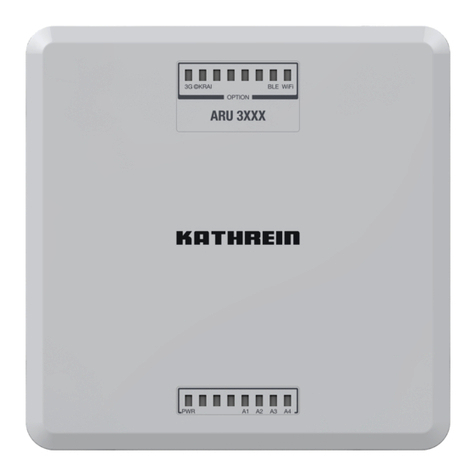
9 / 16
4. Save the protective caps to protect the connectors of the cables/devices when
removing or remodelling.
5. The minimum allowed bend radius for the bre optic cable is 15 mm during the instal-
lation and 10 mm during use. A smaller radius signicantly increases the attenuation
and may cause damage to the bre optic cable. Fibre optic cables must always be
handled carefully - especially during installation.
Cleaning optical connections:
If an optical connector (male) has been repeatedly inserted and unplugged or if failure
occurs, it may be necessary to clean the optical connector pins or sockets.
For cleaning purposes please use the optical cleaning set ORS 1 or the optical cleaning
tool ORW 1.
Input level optical transmitter OSC 100 micro
To ensure that the signals are transmitted through the bre optic cables, the RF signals
must meet the following requirements:
TV (DTT/CATV) DVB-T, Cable TV
To ensure that the digital television signals are transmitted and received, the digital signals
to the transmitter should be set to the same high level, especially when multiple digital
channels are transmitted.
As a guide, the input signals should meet the following requirements:
1. With QAM64, a maximum of 40 TV channels can be transmitted, with QAM256, a
maximum of 20 TV channels. With limitations on signal quality, up to 25 QAM256
TV channels can be transmitted. Wherever possible, a TV channel grid in the lower
frequency range should be preferred.
2. Total input power: -19 dBm (90 dBμV)
3. Depending on the number of digital TV channels, the following levels must be met at
the optical transmitter’s (OSC 100 micro) TV input:
All levels are stated per digital TV channel
• 40 TV channels with a maximum of 74 dBμV
• 20 TV channels with a maximum of 77 dBμV
• 16 TV channels with a maximum of 78 dBμV
• 10 TV channels with a maximum of 80 dBμV
• 8 TV channels with a maximum of 81 dBμV
The minimum input level (per digital channel) should be at least 74 dBμV.
If the quality of the TV input signal is not optimal or when the digital TV channels cannot
be equally levelled, the system should be adapted so that the optical attenuation of less
than 21 dB is reached to ensure correct signal reception at the outlet (especially when
many digital channels are transmitted).




























